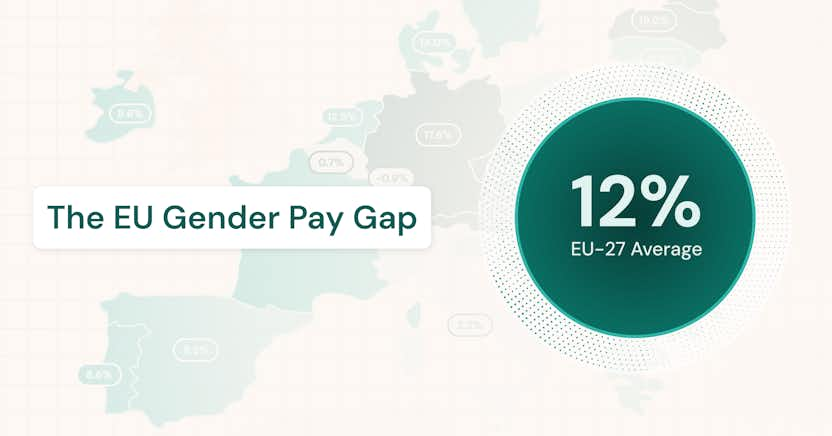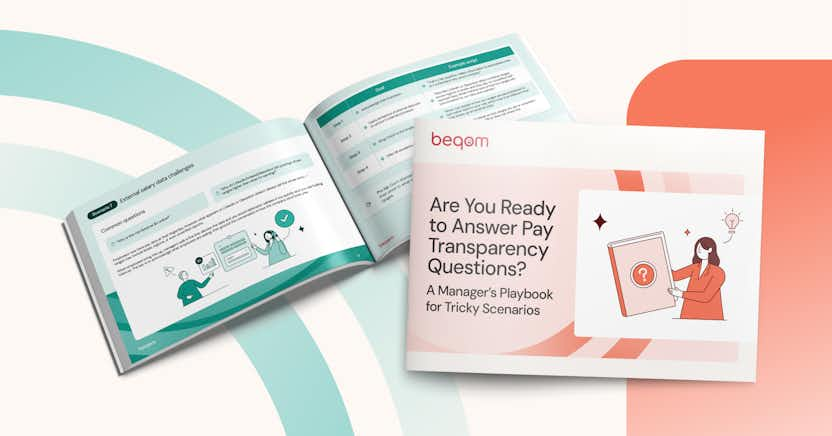Sales Commission Plans: Advantages, Examples, and Best Practices

Learn more about the following beqom products
Sales commission plans are powerful tools for motivating employees and driving business results by aligning compensation with performance. When designed well, they encourage high-quality sales efforts, boost revenue, and foster a competitive, high-achieving culture. However, poorly structured commission plans can lead to unintended consequences, such as misaligned goals, perceptions of inequity, or even counterproductive behavior.
In this guide, we explore the key advantages of sales commission plans, address common challenges and pitfalls, and outline best practices for creating a balanced, data-driven commission structure that promotes both individual and organizational success.
What is a sales commission plan?
A sales commission plan is a compensation structure where sales employees are paid based on the sales they generate. This plan typically combines a base salary with a variable component (the commission), which is directly tied to the amount or value of sales made. The commission can be a percentage of the sale or a fixed amount for each transaction.
Sales commission plans are designed to incentivize employees to drive revenue, align their goals with company objectives, and reward high performance. They can vary by business, with different models such as tiered, flat-rate, or performance-based commissions tailored to different sales roles or industries.
How to calculate sales commission
Organizations can calculate sales commissions by applying a standardized formula or using their own customized commission plans. A typical standard sales commission formula is as follows:
Total Sales Revenue x Commission Rate = Total Commission
Here is an example of a sales commission using this formula.
A sales representative earns a 10% commission on all contracts they secure. If they successfully close contracts totaling $15,000 in a given month, their commission would amount to $1,500 (10% of $15,000), and this commission is added on top of their base salary, which is $2,500 per month. Therefore, in that month, their total earnings would be $4,000 ($2,500 base salary + $1,500 commission).
What is a typical commission for sales?
In large organizations, sales commissions typically range from 5% to 10% of sales revenue, depending on the industry and the complexity of the sales process. However, the commission rate can vary significantly. For example, high-margin industries like software sales, where deal sizes can be large, may offer lower commissions (5%-7%), while industries with lower margins or more competitive markets, such as real estate or luxury goods, might offer higher rates (10%-20%). Small to Medium Enterprises (SMEs) sometimes have higher commission rates.
Additionally, large companies often use tiered or progressive commission structures, where higher sales volumes or exceeding quotas lead to increased commission rates. The structure of the commission plan may also depend on whether the salesperson is in a direct sales role or part of a team with shared revenue targets.
All in all, the commission strategy for a company is driven by many factors, including industry type, gross margin, sales cycles, company goals, market competition, employee motivation, and compensation structure integration. Each of these elements influences how the commission plan is designed to incentivize sales, reward high performance, and align with broader organizational objectives.
The advantages of sales commission pay
As with other forms of sales incentive compensation, sales commission-based pay can increase employee performance, drive revenue for organizations, and reward positive behaviors such as initiative in sales strategies. The primary benefits of implementing a sales commission plan in your organization includes the following:
- Motivating employees: When their income is directly linked with their performance, employees will be motivated to work harder and optimize their skill sets.
- Increasing retention: Employees who can exceed their base salary and earn substantial income for their performance will likely be more loyal to the company, which reduces turnover rates for organizations.
- Attracting new talent: Sales commission plans are an attractive incentive that companies can utilize during the recruitment process, hiring talented employees who have the ability to thrive in a performance-driven environment.
- Aligns Interests: Commission structures align the salesperson’s goals with company growth, encouraging employees to focus on profitable outcomes.
- Flexibility: Sales teams can earn more during peak seasons or for higher performance, rewarding effort without the need for immediate salary adjustments.
- Cost-Effective: Companies only pay for results, helping to control labor costs during slower periods.
Sales incentive challenges
Sales incentives, such as commission plans, although effective at motivating, attracting, and retaining employees, have certain pitfalls and can present challenges for organizations.
A risk of inconsistent implementation
When a sales commission plan or similar incentive lacks clear guidelines, it risks being inconsistently implemented, causing disengagement and confusion among employees.
Due to ambiguous terms or unclear structures, employees may interpret the commission plan differently, and some could perceive it as unfair, leading to decreased morale and motivation.
How to address: Clearly outline the sales incentive, including its criteria, eligibility requirements, performance metrics, and calculation methods.
HR can facilitate communication through documents, videos, or presentations, and employees should have opportunities to provide feedback or ask questions, ensuring there is a collective understanding of the purpose of the sales incentive and the actions they can take to maximize their potential earnings.
Counterproductive incentives
Organizations risk constructing sales incentives that focus on incentivizing behaviors rather than outcomes, which can reduce the quality of employee performance and result in negative consequences for both the organization and its customers.
When incentives prioritize short-term sales numbers over long-term customer satisfaction, employees may resort to aggressive or deceptive tactics to meet their targets. This can lead to dissatisfied customers who may not return, damaging the organization’s reputation.
How to address: Articulate clear objectives and develop incentive plan structures that directly reward achieving desired objectives rather than merely incentivizing the behaviors that may lead to them.
For instance, instead of rewarding sales numbers, the organization could reward representatives for the retention rate and satisfaction level of their clients, encouraging a focus on building lasting customer relationships, which, over time, will lead to higher sales.
Misalignment between organizational and employee goals
Sales incentives should be utilized to instill new behaviors and discourage undesirable ones while supporting organizational goals rather than conflicting with them.
However, when employees’ personal objectives do not align with the goals of the organization, it can lead to reduced overall performance, causing organizations to fail to meet their goals while employees are demotivated to effectively contribute their efforts.
How to address: Incentive plans should be designed with input from employees to ensure they feel valued and motivated to achieve both personal and organizational objectives. Regular performance reviews and feedback exchanges can also help realign employee goals with developing business priorities.
Quotas and territories
Quotas and territories play a critical role in shaping sales commission strategies by establishing clear targets and defining the scope of a salesperson's responsibility.
Quotas: Quotas are predetermined sales targets that salespeople must achieve to earn their commission or additional incentives. They ensure alignment between company goals and individual performance. When well-calibrated, quotas drive motivation and performance. However, if set too high or too low, they can demotivate employees, potentially reducing earnings or limiting growth. Quotas also impact the commission structure, often increasing payouts once targets are met or exceeded.
Territories: Sales territories define the geographic or market areas assigned to sales representatives. These territories affect sales potential and commission earnings since larger or more lucrative areas may offer more opportunities. Well-structured territories balance opportunity distribution and prevent overlap or internal competition. In compensation terms, territories often influence the type of commission (e.g., higher rates for harder-to-sell regions or untapped markets).
Balancing quotas and territories helps create fair, motivating commission strategies that drive performance, create efficient sales operations, and align sales efforts with business objectives.
Examples of sales commission structures
Here are common examples of effective sales commission plan structures your organization can implement.
Commission-only
Sales representatives earn their income solely through commissions based on their sales. There is no base salary component, making earnings directly proportional to sales performance. This structure can motivate high performers but may also lead to financial uncertainty during slower sales periods.
Example: A sales representative earns a 10% commission on all products they sell. If they sell $30,000 worth of products in a month, their commission would be $3,000 (10% of $30,000).
Base salary plus commission
Sales representatives receive a guaranteed base salary and commissions based on their sales performance. The base salary provides stability and financial security, while commissions incentivize achieving sales targets and exceeding performance expectations.
Example: A sales representative receives a base salary of $4,000 per month plus a commission of 3% on the total sales they generate. In a month where they achieve $40,000 in sales, their commission would be $1,200, and their total income would be $5,200.
Gross margin commission
The commission is calculated based on the profit margin of each sale rather than the total sales revenue. This structure encourages sales representatives to focus on selling products with higher profit margins, which will maximize the organization’s profitability.
Example: A sales representative sells a product with a gross profit margin of $2000. Their commission rate is 10% of the gross profit, making their commission $200 (10% of $2000).
Territory volume commission
The commission is determined by the total sales volume achieved within a specific geographic or market territory assigned to each sales representative. This structure incentivizes expanding market reach and capturing market share.
Example: A sales representative earns a commission based on the total sales volume within their assigned territory. If their territory achieves $300,000 in sales for the quarter, and their commission rate is 2%, their commission would be $6,000.
Commission draw
Sales representatives receive a draw against future commissions, which is later deducted from their actual earnings as sales are made. This structure provides financial support during initial stages or slow sales periods but requires careful management to avoid overpayment relative to actual sales performance.
Example: A sales representative receives a monthly draw of $3,000 against future commissions. In a slow month where they only earn $2,500 in commissions, their draw of $3,000 covers their earnings, and they would not receive additional commission that month. In a busier month, where they earn $6,000 in commissions, they would receive $3,000 (the draw) plus an additional $3,000 in commission earnings.
Ensuring compliance with sales commission
Organizations must ensure the audibility and transparency of their sales commission plans to maintain compliance. Compliance can be achieved through the centralization of all data related to sales transactions, contract terms, and commission payments, and by providing an audit trail of any approval processes.
Organizations should also correctly process this data to ensure accurate financial reporting and ensure compliance with Accounting Standards Codification (ASC) 606.
This can be accomplished with compensation management software that tracks relevant data and automates the allocation of commissions based on predefined contract terms. Integrating this software can provide automation and standardization, reducing the likelihood of human error and non-compliance with ASC 606 revenue reporting guidelines.
Sales commission best practices
Consider the following best practices when planning, implementing, and reviewing your organization’s sales commission structure.
Make data-driven decisions
Leveraging advanced analytics for sales performance management allows organizations to execute the optimal strategy when implementing sales commission plans. These analytics can identify patterns and trends, while key metrics can be used to ensure commissions are rewarding enough, sales representatives are earning what they should be, and quotas or objectives are appropriately defined.
Support business objectives
Thoughtfully designing sales commission plans to support primary objectives like revenue growth, market expansion, and customer satisfaction allow organizations to achieve desired results. Designing a sales compensation plan like a certified professional involves establishing these objectives, outlining the goals of each sales role, and assessing how the incentive will influence the relationship between sales representatives and management.
Approach compensation holistically
Organizations can take a comprehensive approach to sales commission plans by utilizing a platform that can unite both performance and compensation solutions. This seamless, holistic approach to commission pay and other financial incentives through an all-in-one platform ensures the equitable and consistent distribution of rewards across an organization, minimizing room for error and supporting informed decision-making.
Educate yourself
There is a lot to know about creating optimal sales plans. Research best practices as you design your plans. beqom’s Compensation Glossary explains many key terms used in compensation and sales incentives.
Streamline sales incentives with beqom’s flexible solutions
Make your organization’s sales commission plan fair and effective with beqom’s dedicated sales performance management software and sales performance management tools as part of their CompComplete solution. Through this software, you can optimize the administration of sales incentives, ensuring clarity and consistency in commission calculations and payout processes.
For more information on implementing optimal sales incentive plans, in a context of complete compensation, reach out to beqom and tell us your sales compensation goals and challenges.







